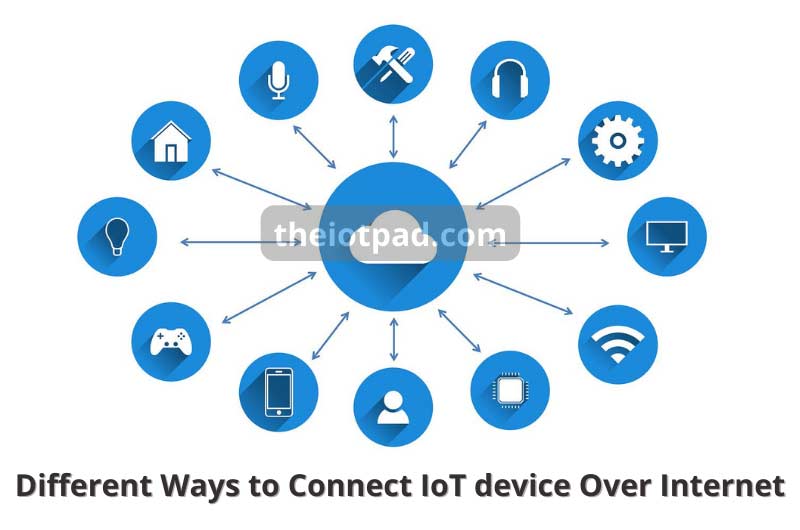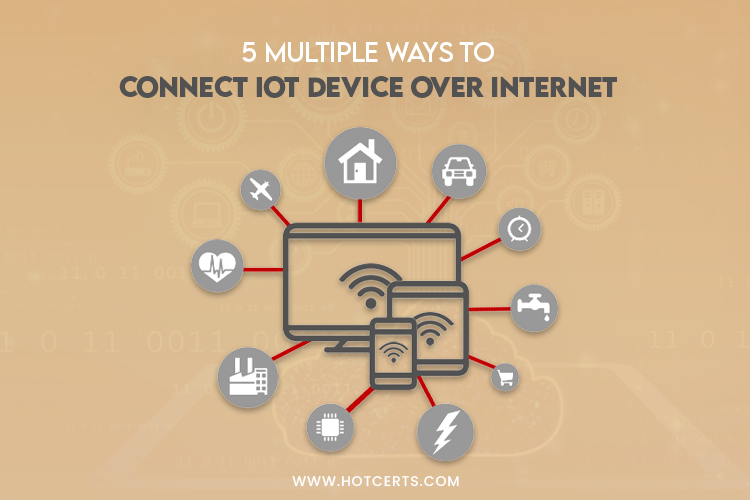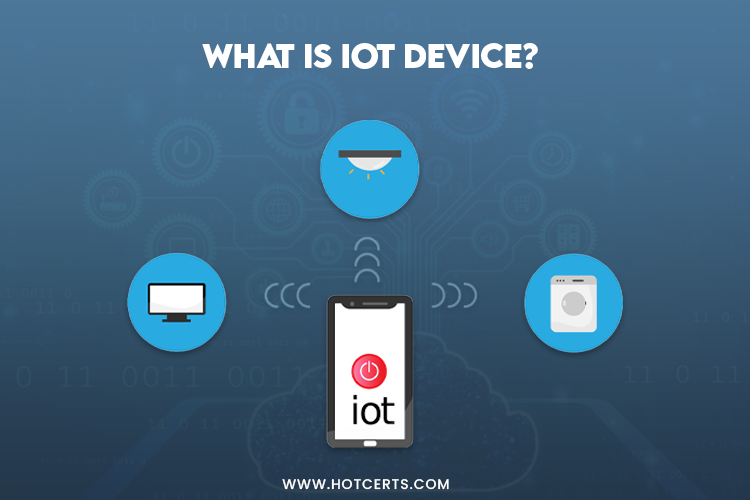5 Ways To Connect IoT Devices To The Internet: Easy Guide
Is the future of connectivity truly here, woven into the very fabric of our everyday lives? The Internet of Things (IoT) has not just arrived; it has subtly, yet profoundly, reshaped how we interact with the world around us, connecting everything from our homes to the far reaches of industry.
The concept of the Internet of Things, initially a buzzword, has transcended its novelty status to become an integral component of technological advancement. It encompasses a vast network of interconnected devices, each capable of collecting, exchanging, and acting upon data. From smart appliances that anticipate our needs to sophisticated industrial sensors monitoring production lines, the IoTs reach is extensive and continues to expand rapidly. The core of this revolution lies in the ability of these "smart" devices to communicate with each other and with us, often without direct human intervention, streamlining processes, enhancing efficiency, and providing unprecedented levels of insight.
The heart of IoT lies in the ability of these interconnected devices to connect to the internet. But how do they achieve this seamless integration? Let's delve into the various pathways these devices employ to connect with the vast expanse of the internet.
Cellular Networks: The Wireless Backbone
One of the most prevalent and, in many cases, the most efficient method of connecting IoT devices is through cellular networks. This method leverages existing mobile networks to establish a connection, making it an attractive option for devices that require mobility or are deployed in areas without readily available Wi-Fi. Cellular connectivity's widespread coverage and relatively low cost make it an especially attractive option.
Cellular options offer significant advantages, including broad geographic coverage and ease of deployment. Devices can be quickly set up in various locations, removing the need for complex network infrastructure installation.
Wi-Fi: Connecting Within Reach
Wi-Fi offers another crucial connection pathway for IoT devices, particularly in environments where a local area network (LAN) is already established, like homes or offices. The wireless connection is facilitated by a wireless adapter within the IoT device.
Once connected, the wireless adapter links with the router, serving as the conduit for the device's data to traverse the internet via a wired connection. This approach provides a balance of performance and cost-effectiveness, making it ideal for devices that remain within range of a Wi-Fi network.
Satellite Communication: Reaching the Unreachable
For applications in remote areas where cellular and Wi-Fi are unavailable, satellite communication provides the necessary link. This method is crucial for applications like environmental monitoring in isolated regions, tracking assets across continents, or supporting maritime operations. The use of satellites ensures that devices can transmit and receive data regardless of geographical limitations.
Bluetooth: Short-Range Connectivity
Bluetooth provides a solution for short-range communication, frequently used in personal area networks (PANs). It's ideal for applications where devices need to communicate with a central hub or a smartphone within a limited radius. Wearable devices, smart home appliances, and various other gadgets leverage Bluetooth's simple pairing and efficient data transfer.
RFID and NFC: Proximity-Based Interaction
Radio-Frequency Identification (RFID) and Near-Field Communication (NFC) provide another avenue for connecting IoT devices, particularly for applications requiring close-range interaction. RFID uses radio waves to automatically identify and track tags attached to objects. NFC, a subset of RFID, enables short-range wireless communication between devices, typically within a few centimeters. These technologies are commonly used in asset tracking, access control, and contactless payments.
LPWAN: Optimized for Long-Range, Low-Power Applications
Low-Power Wide-Area Networks (LPWANs) are designed specifically for IoT devices that need to transmit small amounts of data over long distances while minimizing power consumption. These networks, like LoRaWAN and NB-IoT, are especially suited for applications such as smart agriculture, environmental monitoring, and smart cities.
Ethernet: The Wired Foundation
Ethernet, a standard wired technology, forms the bedrock of network communication in many settings, including the internet. Ethernet connectivity for IoT devices provides a reliable, high-speed connection suitable for applications requiring a robust network infrastructure. While typically used in stationary devices, such as industrial machines and servers, Ethernet delivers a high-performance connection, essential for transferring substantial amounts of data.
The Internet of Things in Action: Real-World Applications
The impact of IoT can be felt across many sectors:
Smart Homes: Thermostats, lighting systems, and security devices are integrated, creating an efficient and responsive environment.
Healthcare: Remote patient monitoring, wearable health trackers, and smart medical devices improve patient care and reduce healthcare costs.
Manufacturing: Predictive maintenance, optimized production processes, and supply chain tracking are enhanced through IoT.
Smart Cities: Traffic management, environmental monitoring, and public safety systems improve urban life.
Retail: Inventory management, personalized shopping experiences, and customer behavior analysis are enhanced through IoT.
Navigating the Challenges
Despite the vast possibilities, there are significant challenges related to IoT development and deployment.
Security: Protecting IoT devices from cyber threats and data breaches is essential.
Interoperability: Ensuring that different devices and platforms can communicate effectively is crucial.
Data Management: Handling the vast volumes of data generated by IoT devices and extracting valuable insights.
Privacy: Safeguarding user data and respecting privacy rights.
Future Trends
The IoT landscape is constantly evolving. Several emerging trends are shaping the future.
Edge Computing: Processing data closer to the source, improving response times and reducing bandwidth requirements.
5G Connectivity: Faster data speeds and enhanced network capabilities, creating opportunities for demanding IoT applications.
Artificial Intelligence (AI): Integrating AI to enhance the insights from IoT data and automate decision-making.
Blockchain Technology: Securing IoT data and enhancing trust and transparency within the network.
The Path Ahead
The Internet of Things is no longer a future possibility; it is a reality. It is a revolution that is transforming industries and improving how we live. As the technology continues to evolve, we can anticipate increased integration, novel applications, and ever-more significant impacts on our lives.
Remote Access and the Role of NAT Routers
One critical facet of many IoT applications is the ability to remotely connect to devices, a capability often complicated by network address translation (NAT) routers and firewalls. You can remotely connect to your devices behind a NAT router and firewall over the internet.
NAT routers play a vital role in connecting devices to the internet, assigning private IP addresses to devices on a local network, and then translating these private addresses into a single public IP address. This process enables multiple devices to share a single internet connection while enhancing network security.
Firewalls further enhance network security by monitoring and controlling network traffic based on predefined security rules. They act as a barrier between the internal network and the external internet, which can be challenging to establish a direct, unhindered connection to IoT devices.
Strategies for Remote Access
Several strategies can facilitate remote access to IoT devices that operate behind NAT routers and firewalls.
Port Forwarding: This involves configuring the router to forward incoming traffic on a specific port to a particular device on the local network. While straightforward to set up, it can introduce security risks if not correctly configured.
VPN (Virtual Private Network): Creating a VPN allows devices to connect to the local network securely, providing a more secure connection.
Reverse Proxies: A reverse proxy sits in front of your IoT devices and forwards requests from the internet. This simplifies management and provides a layer of security.
Cloud-Based Services: Many cloud platforms offer services specifically for enabling remote access to IoT devices, simplifying the setup and management process.
Securing Remote Connections
Regardless of the method chosen, ensuring the security of these remote connections is paramount.
Use Strong Passwords: Ensure that all devices have strong and unique passwords to prevent unauthorized access.
Keep Software Updated: Regular software updates are essential to patch security vulnerabilities.
Implement Encryption: Utilize encryption protocols, such as TLS/SSL, to secure data transmission.
Monitor Network Traffic: Monitor the network for suspicious activity and any signs of unauthorized access.
Best Ways to Run IoT Devices Over the Internet
Here are the perfect ways from which you can run IoT device over internet.
Embracing the Future
The Internet of Things is a dynamic, evolving technology that will continue to transform how we interact with the world around us. From smart homes to connected industrial systems, its impact on society is extensive and will grow. The future of IoT is filled with opportunities.


